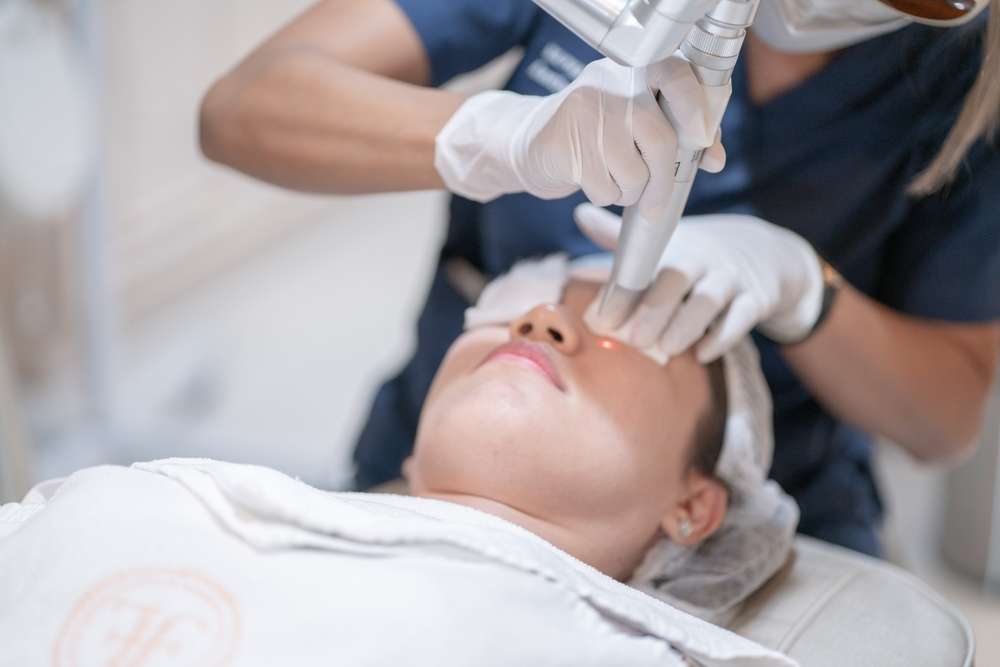Renew Your Complexion: The Complete Skin Rejuvenation Guide
Discover how modern skin rejuvenation restores a youthful, radiant complexion using lasers, light-based therapies, chemical peels, and other advanced techniques. Learn how treatments stimulate collagen and elastin, what to expect at a clinic, typical results and longevity, and ballpark costs. Find practical guidance for choosing the right anti-aging procedures and maintaining results with post-care and maintenance plans.

Skin rejuvenation has become a go-to solution for people looking to refresh their complexion and reduce visible signs of aging. Advances in dermatology and aesthetic medicine now offer a range of targeted procedures that encourage the skin to repair itself, improving texture, tone, and firmness without necessarily requiring surgery. This guide explains how those therapies work, which laser and light treatments are most common, what a clinic visit looks like, how long results typically last, and what you can expect to pay.
How skin rejuvenation works
Most skin rejuvenation approaches rely on controlled injury to trigger the skin’s natural healing response. When a treatment creates micro-injury or heat in the skin, fibroblasts are stimulated to produce new collagen and elastin. Over weeks and months this remodeling yields firmer, smoother skin, reduced fine lines, and more even pigmentation. Treatments vary in depth and intensity, from gentle surface procedures to deeper resurfacing methods, which affects downtime and the magnitude of improvement.
Popular laser and light-based therapies
A variety of lasers and light devices are used depending on the concern being treated. Each modality has strengths that make it more suitable for certain results.
-
Fractional CO2 laser: This is a powerful resurfacing option that creates microscopic zones of thermal injury in deeper layers of the skin. It is effective for reducing deep wrinkles, scarring, and uneven texture. Expect more significant downtime than gentler lasers, but also more dramatic improvement in skin laxity and surface irregularities.
-
Erbium YAG laser: Known for precision and reduced thermal damage, the Erbium YAG is often chosen for treating fine lines and superficial irregularities. It typically causes less post-treatment redness and a shorter recovery period compared with deeper CO2 resurfacing.
-
Intense Pulsed Light (IPL): Technically not a laser, IPL emits a broad spectrum of light to target pigmentation, sunspots, and small vascular lesions. It can improve overall tone and clarity with minimal downtime and is often used in combination with other therapies.
-
Nd:YAG laser: This versatile device penetrates deeply and is commonly used for hair removal and for treating vascular lesions and certain types of pigmented lesions. Its settings can be adjusted for different skin types and targets.
In many cases, practitioners combine treatments to address multiple concerns at once. A tailored approach generally produces more balanced and natural-looking results.
What happens during a clinic visit
A typical clinic visit follows several steps to ensure safety and effectiveness:
-
Consultation: Your clinician evaluates your skin, discusses medical history, and clarifies your aesthetic goals. This helps determine suitable treatments and realistic expectations.
-
Customized plan: Based on the assessment, a personalized treatment plan is created, which may include one or more laser sessions, light therapies, chemical peels, or injectables.
-
Preparation: Before the procedure your skin will be cleaned and, if necessary, topical anesthetic applied to reduce discomfort. Pre-treatment instructions may include avoiding sun exposure and certain medications.
-
Treatment session: Procedures can range from quick 15-minute appointments to sessions exceeding an hour depending on the area and technique.
-
Aftercare: Post-treatment guidance typically includes gentle cleansing, applying recommended topical products, sun avoidance, and specific instructions for managing redness or peeling.
-
Follow-up: Many treatments require multiple sessions spaced over weeks or months for optimal outcomes. Follow-up visits allow your clinician to monitor healing and adjust the plan if needed.
How long results last
Longevity depends on the procedure, individual skin biology, and lifestyle factors like sun exposure and smoking. Typical durations are:
-
Laser treatments: Improvements can last from around six months up to two years, with deeper resurfacing often producing longer-lasting change.
-
Chemical peels: Superficial peels may show benefits for 1 to 2 months, while medium or deep peels can offer results persisting for several months.
-
Microdermabrasion: Effects are usually short term, often visible for about a month, and often used as a maintenance therapy.
-
Dermal fillers: Depending on the product used, dermal fillers can last anywhere from six months to two years.
Maintenance sessions and a consistent at-home skincare routine, including sun protection and appropriate topical agents, will help sustain results longer.
Costs and typical session counts
Below is a general pricing overview for common skin rejuvenation options. Actual costs vary by clinic location, provider experience, and the specifics of each treatment.
| Treatment | Average Cost Range | Typical Number of Sessions |
|---|---|---|
| Fractional CO2 Laser | $1,000 - $2,500 | 1-3 |
| Erbium YAG Laser | $1,500 - $3,000 | 1-3 |
| IPL Therapy | $300 - $600 per session | 3-6 |
| Nd:YAG Laser | $200 - $800 per session | 4-6 |
| Chemical Peels | $150 - $800 | 3-6 |
| Microdermabrasion | $75 - $200 per session | 6-12 |
Prices and cost estimates are approximate and may change. Independent research and consultation with your provider are recommended before making financial decisions.
Deciding which treatment is right for you involves balancing desired outcomes, downtime, budget, and skin type. A qualified clinician will recommend a plan that aligns with your goals while prioritizing safety. Many clinics also offer package pricing for multiple sessions, which can reduce the per-session cost and encourage adherence to the recommended schedule.
This article is for informational purposes only and should not be considered medical advice. Please consult a qualified healthcare professional for personalized guidance and treatment.






